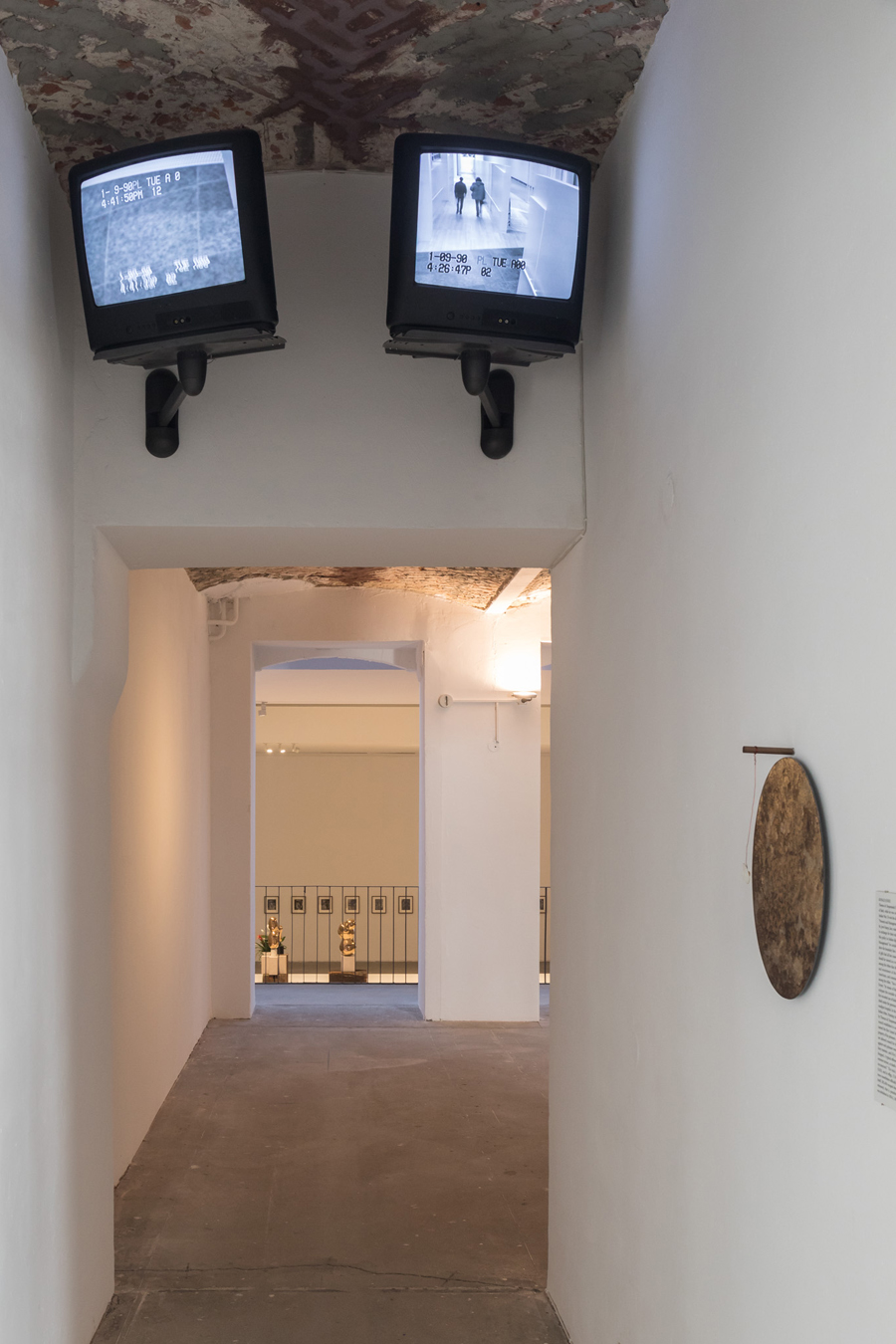‘Enemy of the Stars’
KW Institute for Contemporary Art, Berlin, Germany
KW Institute for Contemporary Art, Berlin, Germany

A body of works, dating from 1985 to 1992, by US artist, critic and teacher Ronald Jones forms the core of this group show co-curated by the artist Jason Dodge, a former student of Jones’s, and KW director Krist Gruijthuijsen. Jones prefigured artists such as Simon Starling and Danh Vō in drawing on historical references as an intrinsic element of his work while forecasting the paranoid toxicity of today’s current political atmosphere. The show’s title, ‘Enemy of the Stars’ – borrowed from a 1914 play by British vorticist Wyndham Lewis – posits Jones as the titular enemy or, perhaps, as a new Lewis, blasting corruption and hypocrisy through strategic exposure.

While Starling’s and Vō’s works allow audiences to participate in narrative disclosure, Jones’s are antagonistic and function like decoys. The asymmetrical forms of his Constantin Brâncuși-esque sculptures in bronze, marble and limestone, monumentally presented on a platform, are borrowed from DNA fragments carrying disease-causing mutant genes. The works’ titles – sometimes running to a whole page of text – relate these ostensibly minimal sculptural forms to issues such as HIV or the treatment, while in the morgue, of students killed in the Tienanmen Square Massacre. Two large vases full of opulent flowers manifest this most literally: designed by German architect and Nazi minister Albert Speer, the vessels in this work (o.T., 1992) once belonged to Adolf Hitler, and are documented in photographs of his apartment, while the flowers they contain are all poisonous. The viewer, first seduced by surface sheen, then slapped with grim and violent reality, is cast as either hapless dupe or helplessly complicit.

A handful of works by other artists, mostly Jones’s contemporaries, reinforce this unsettling effect. A sound piece by Julia Scher (Audio Playback Electronics, 1989) is accompanied by CCTV monitors (Occupational Placement, O.P., 1989–90), mounted high in the corners of the room, intercut with fuzzy, closed-circuit footage of anonymous strangers in corporate corridors with ominous subtitles: ‘She has violent and protective fantasies’; ‘Her image was captured for the use of others’. In two photographs by Louise Lawler (Silent Night, 2011/2013, and Homeopathic, 2013/2015), the subjects (in both cases artworks) are obscured, either by the play of reflective surfaces or shadows. Time and place become ambiguous, as does identity: David Hammons’s contribution to the show is a small piece by Agnes Martin, displayed in lieu of his own work in an act of authority-undermining transference.

Jones’s works travel across history – from the Hague Convention of 1954 to South African apartheid to the Vietnam War. For instance, a series of benign-looking, cherry-wood dining tables are, in fact, small-scale versions of those used at the talks which led to the 1973 Paris Peace Accord and, ultimately, the end of the Vietnam War (Untitled (Peace Conference Table Designs by The United States and South Vietnam 1969), 1987). The dense and cryptic collusion of references in Jones’s works reveals situations where time, place, identity and material are imbricated in webs of corruption, coercion and deceit.
Surrounding Jones’s works is Helmar Lerski’s Metamorphosis (1935–36): 75 silver gelatin prints in which a man’s face is illuminated by small mirrors to appear like burnished copper or chiselled stone, softly naturalistic or harshly melodramatic. Of these works, shot by a Swiss Jewish photographer in Palestine in 1936, Lerski said: ‘In every human being there is everything: the question is only what the light falls on.’
Jones’s outlook is less optimistic but its basic tenet is the same: appearances are misleading. Jones tried to force politics back onto the agenda of a complacent art scene. In today’s era defined as ‘post-truth’, in which fear and mistrust are consciously cultivated by politicians and the media alike, his message remains sharply relevant. Their unremitting bleakness casts an oppressive pall: as Dodge defined them, these are ‘portraits of death’.
Main image: Ronald Jones, ‘Enemy of the Stars’, 2017, with David Hammons, Louise Lawler, Helmar Lerski, and Julia Scher, installation view, KW Institute for Contemporary Art. Courtesy: KW Institute for Contemporary Art, Berlin; photograph: Frank Sperling























